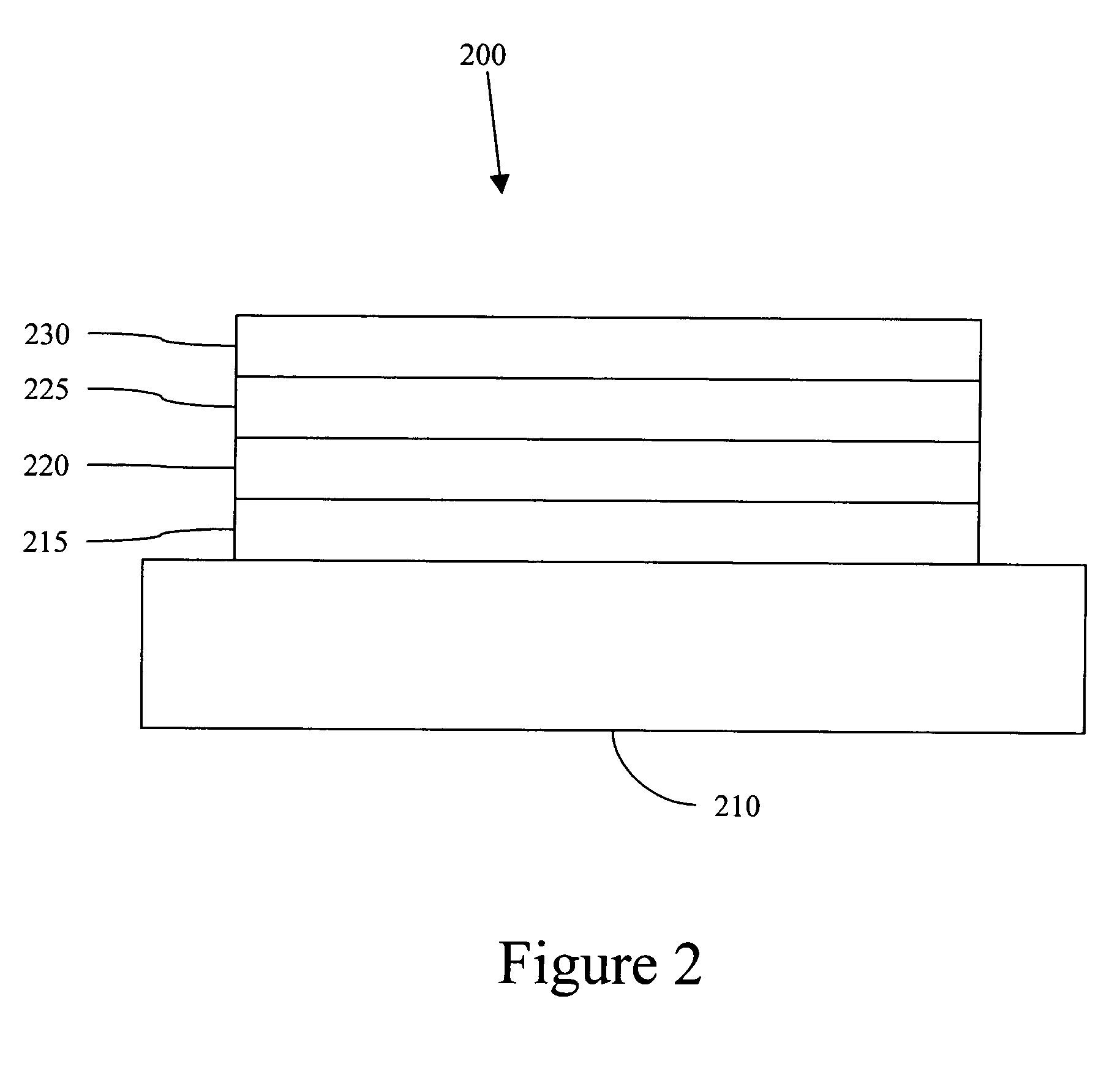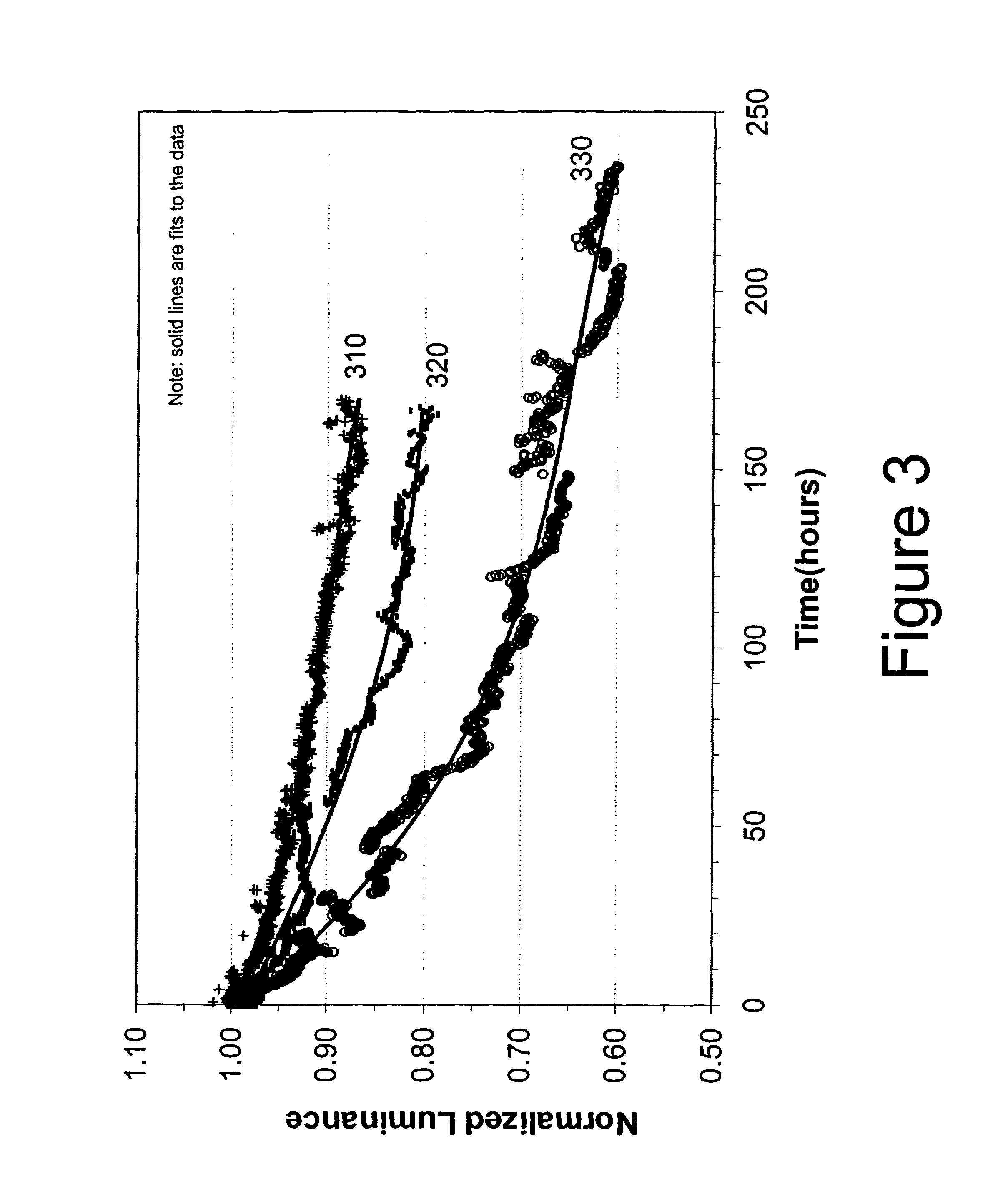Organic light emitting materials and devices
a light-emitting material and organic technology, applied in the direction of discharge tube luminescnet screens, other domestic articles, natural mineral layered products, etc., can solve the problems of energy loss, energy loss, energy loss, etc., and achieve the effect of improving stability and improving electrophosphorescen
- Summary
- Abstract
- Description
- Claims
- Application Information
AI Technical Summary
Benefits of technology
Problems solved by technology
Method used
Image
Examples
example 1
[0120]STEP 1: 3,5-Bis(trifluoromethyl)phenylboronic acid (13.5 g, 52 mmol), 2-bromopyridine (6.2 g, 39 mmol), palladium (II) acetate (0.29 g, 1.3 mmol), triphenylphosphine (1.36 g, 5.2 mmol), and sodium carbonate (7 g, 68 mmol) were added to 200 mL. of 1,2-dimethoxyethane and 100 mL. of water. The reaction mixture was heated to reflux for 5 hours and after cooling, 100 mL of water and 100 mL. of ethyl acetate were added. The phases were separated, the organic layer was dried over magnesium sulfate and the excess solvent was removed. 2-(3,5-Bistrifluoromethylphenyl)pyridine was purified by column chromatography and collected as a white solid (7.1 g).
[0121]STEP 2: 2-(3,5-Bis(trifluoromethyl)phenyl)pyridine (1.4 g, 4.8 mmol) from Step 1 above and iridium (III) chloride hydrate (0.87 g, 2.4 mmol) were added to a flask containing 15 mL. of 2-methoxyethanol and 5 mL. of water. The reaction was heated to reflux for 16 hours and allowed to cool. The yellow precipitate that formed was collec...
example 3
[0123]STEP 1: 2,4-Difluoro-5-(trifluoromethyl)bromobenzene (2.0 g, 7.7 mmol), 2-tributylstannylpyridine, and Bis(triphenylphosphine)palladium(II)chloride (0.16 g, 0.23 mmol) were added to 50 mL. xylenes and the mixture was heated to reflux for 16 hours. The reaction mixture was filtered through a silica gel plug and then purified with column chromatography to give 2-(2,4-difluoro-5-trifluoromethylphenyl)pyridine (1.4 g, 5.4 mmol). The product was confirmed by Mass Spectroscopy and 1H NMR.
[0124]STEP 2: 2-(2,4-difuoro-5-trifuoromethylpenyl)pyridine (1.4 g, 5.4 mmol) and iridium (III) chloride hydrate (0.97 g, 2.7 mmol) were added to 10 mL. of 2-methoxyethanol and 3 mL. water. The reaction was heated for 16 hours and a light green precipitate was collected by vacuum filtration and washed with ethanol and hexanes. The dichloro-bridged dimer was dried in a vacuum oven to give 1.0 g (50% yield). The product was used directly in the next step without further purification.
[0125]STEP 3: The ...
PUM
| Property | Measurement | Unit |
|---|---|---|
| wavelength | aaaaa | aaaaa |
| wavelength | aaaaa | aaaaa |
| wavelength | aaaaa | aaaaa |
Abstract
Description
Claims
Application Information
 Login to View More
Login to View More - R&D
- Intellectual Property
- Life Sciences
- Materials
- Tech Scout
- Unparalleled Data Quality
- Higher Quality Content
- 60% Fewer Hallucinations
Browse by: Latest US Patents, China's latest patents, Technical Efficacy Thesaurus, Application Domain, Technology Topic, Popular Technical Reports.
© 2025 PatSnap. All rights reserved.Legal|Privacy policy|Modern Slavery Act Transparency Statement|Sitemap|About US| Contact US: help@patsnap.com



